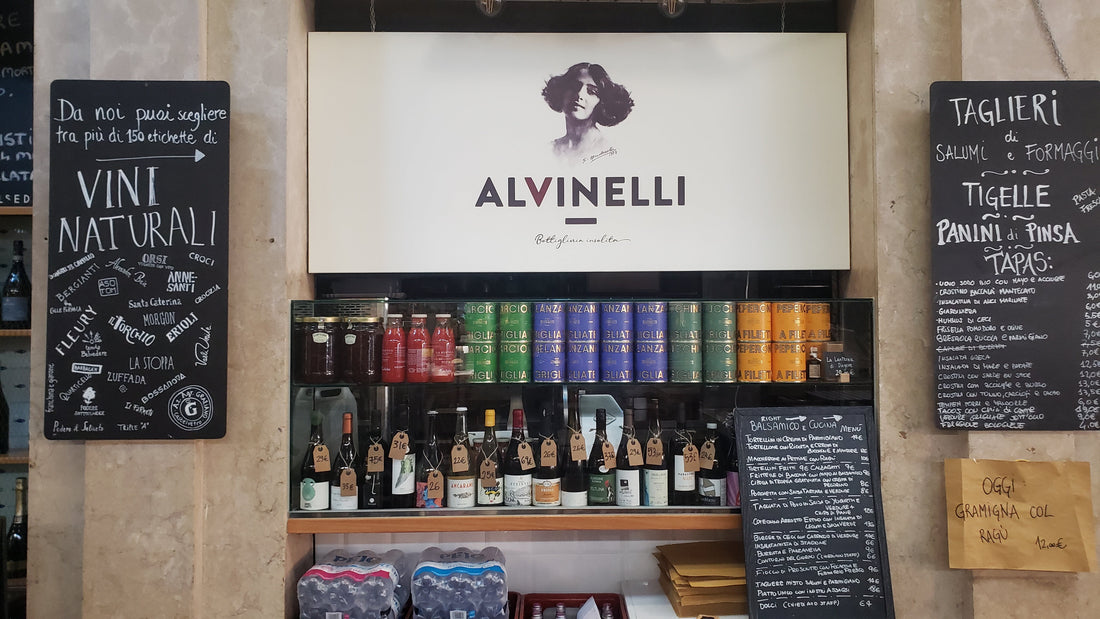Free shipping within Austria from € 99
Free shipping to Germany from € 120
Shipping costs within the EU
Payment methods

Modena – Capital of Lambrusco
Share
As important as Reggio Emilia, featured in our last newsletter, may be for outstanding red fizz, Modena and its immediate surroundings remain the undisputed epicenter of Lambrusco. The region is traditionally divided into three clearly distinct zones: the Po Valley, which stretches—humid and sweltering—north of Modena toward the great river; the hill zone, where gentle slopes south of the city rise gradually into the Apennines; and finally the mountains, where today only a few scattered vineyards remain, and full-time winemakers are increasingly rare.
The Po Valley – A World of Its Own
The Po Plain of Emilia is a world apart. Oppressively hot and muggy in summer, damp and foggy in winter, it offers little in the way of incentives to settle down. Yet its landscape, crisscrossed by countless canals, has been inhabited since ancient times, and its people have developed a strong and idiosyncratic identity. Once defined solely by river-bound activity and agriculture, it has increasingly become industrialized since the 1950s. Tourism plays only a minor role here—but wine certainly does not.
Lambrusco di Sorbara
Two Lambrusco varieties dominate the plain. First is the fascinating Lambrusco di Sorbara, whose main growing area lies between the Po tributaries Secchia and Panaro, mostly on alluvial and sandy soils. Sorbara ripens late and yields wines that are extremely light in color—almost rosé. These wines are more mineral and floral than fruity, with a crackling acidity that sends energy coursing through your veins. It’s a challenging grape, but in skilled hands, it has enormous potential. Gianluca Bergianti is one of its great interpreters.
Lambrusco Salamino di Santa Croce
Gianluca also works with Lambrusco Salamino di Santa Croce, the second key variety of the plain, whose short, cylindrical grape clusters reminded some farmers (or ampelographers) of a salami—hence the name. Salamino is straightforward and fairly generous in the vineyard, making it a favorite among growers. Around 4,000 hectares are planted, mostly rooted in sand, silt, or clay. However, truly great examples are rare. Serious Salamino comes from low-yielding, organically farmed vineyards, is bottle-fermented, and shows notes of red berries and flowers, with a slightly softer texture than Sorbara.
Lambrusco Grasparossa – The Hills of Castelvetro
South of Modena, the terrain gently rises into the first hills around Castelvetro di Modena. Even though it's only 30 kilometers from the Sorbara and Salamino heartlands, you’ll find little of those grapes here. This is the realm of Lambrusco Grasparossa, also known as Lambrusco di Castelvetro. It ripens earlier, has looser grape clusters, and differs most notably thanks to its present tannins, deep color, and intense fruit aromas. Max Brondolo of Podere Sottoilnoce doesn’t make a varietal wine from it, but in his cuvée Saldalama, Grasparossa plays the lead role.
The Wider World of Grapes
Max’s vineyards are home to many other varieties as well. His sparkling wine Confine, made from 12 different grapesgrown in a centuries-old vineyard, is a tribute to this diversity. He also bottles single-variety wines like Trifalco, made from the extremely rare Lambrusco di Fiorano, and the outstanding white sparkling cuvée Valtiberia from Trebbiano Modenese (a white variety better known as a base for Aceto Balsamico di Modena) and the sensational, almost unknown Trebbiano di Spagna—a juicy, profound, and multilayered grape that we believe ranks among the finest white varieties in northern Italy. (We’ll send out a notification as soon as Max’s Fùnambol is back in stock.)
Eating & Drinking in Modena
If you're keen to explore Lambrusco in more depth—and in person—you absolutely should spend time in Modena. The historic center is small but full of charm, and the Romanesque cathedral is arguably the finest of its era. Enzo Ferrari is celebrated all over town, while Luciano Pavarotti, a great Lambrusco lover, is honored with both a statue and a theater.
Where to go for food and wine:
-
Stallo del Pomodoro (Largo Hannover): A great place for dinner. The food is excellent, the wine list is a goldmine of natural wines from Emilia and all over Italy, and the outdoor seating is peaceful and shaded.
-
Ristretto (Vicolo Coccapani 5): Also outstanding, but a notch more upscale in terms of pricing and atmosphere.
-
For small plates and a sharper focus on wine, head to Alvinelli, located inside the covered Albinelli Market. The natural wine selection is both broad and expertly curated, and the staff are friendly and knowledgeable.
-
For a more refined, international vibe with a fine Champagne selection, visit Archer on Via Cesare Battisti.
-
And if you’re just in the mood to drink, your best bet is Enoteca Molto, at Via Gallucci 1.
